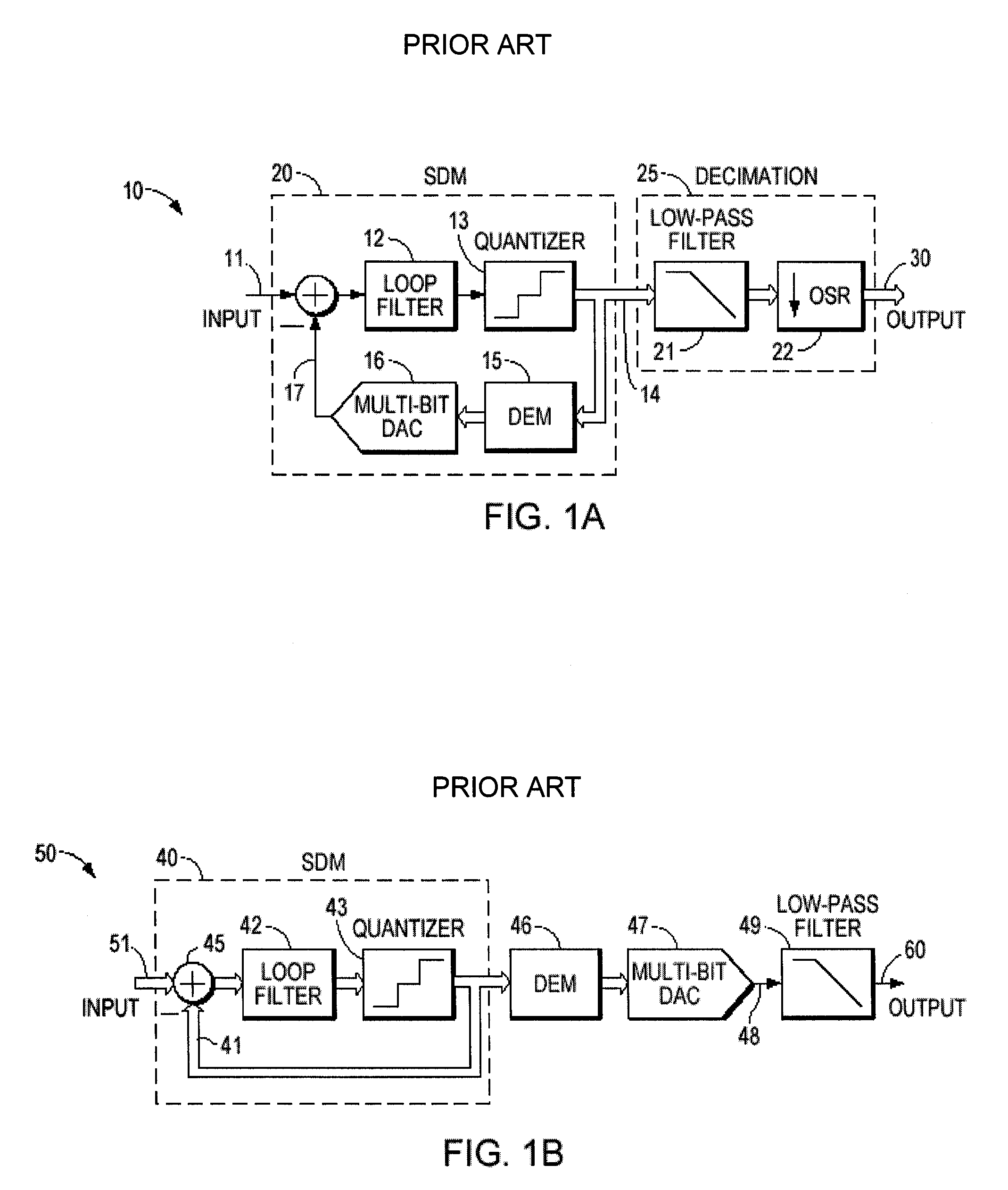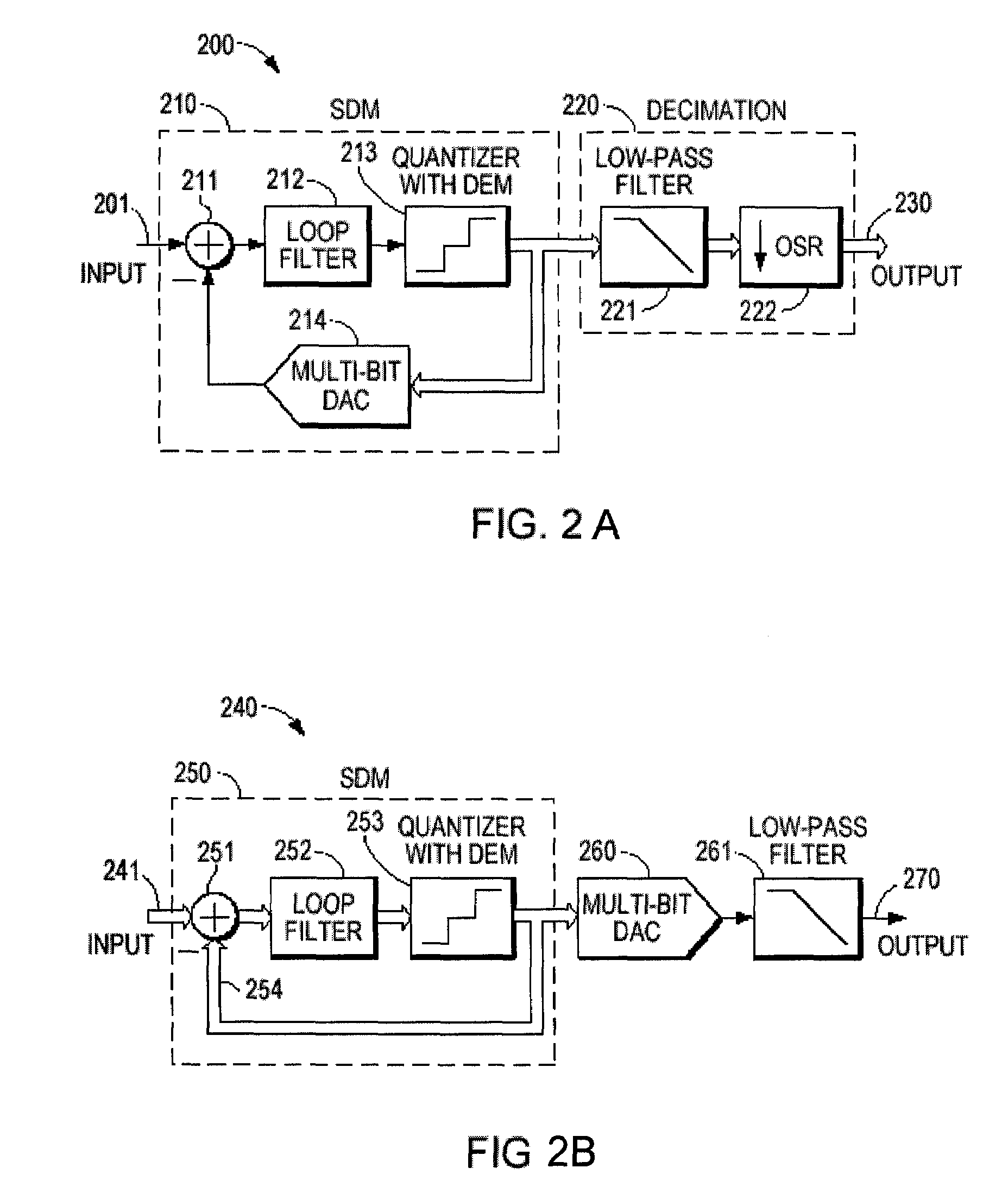Mismatch-shaping dynamic element matching systems and methods for multi-bit sigma-delta data converters
a dynamic element matching and dynamic element technology, applied in transmission systems, instruments, code conversion, etc., can solve the problems of limiting the achievable maximum input signal bandwidth, and reducing the maximum allowable input range, so as to achieve the effect of reducing the delay introduced by the dem algorithm, reducing the delay, and facilitating higher-order spectral shaping of mismatch errors
- Summary
- Abstract
- Description
- Claims
- Application Information
AI Technical Summary
Benefits of technology
Problems solved by technology
Method used
Image
Examples
Embodiment Construction
[0053]FIG. 1A is an illustrative block diagram of a prior art SDM ADC system, showing a top-level architecture for an SDM ADC system 10. An analog input signal 11 in an SDM 20 is subtracted from an analog feedback signal 17, and then processed by an analog feed-forward loop filter 12 before being fed into a multi-bit quantizer 13. The loop filter 12 (which can, for example, be an integrator) filters the resultant signal so as to minimize the effect of the error signal on a noise-shaping characteristic of the SDM 200. The multi-bit quantizer produces a low-resolution high-speed digital signal 14, which is converted in the feedback loop into the analog domain by a multi-bit feedback DAC 16. A digital decimation filter 25 processes the low-resolution and high-speed digital output from the multi-bit quantizer to produce a high-resolution low speed digital signal 30 at the output of the SDM ADC system.
[0054]Still referring to FIG. 1A, the analog input signal 11 to the SDM ADC system 10 h...
PUM
 Login to View More
Login to View More Abstract
Description
Claims
Application Information
 Login to View More
Login to View More - R&D
- Intellectual Property
- Life Sciences
- Materials
- Tech Scout
- Unparalleled Data Quality
- Higher Quality Content
- 60% Fewer Hallucinations
Browse by: Latest US Patents, China's latest patents, Technical Efficacy Thesaurus, Application Domain, Technology Topic, Popular Technical Reports.
© 2025 PatSnap. All rights reserved.Legal|Privacy policy|Modern Slavery Act Transparency Statement|Sitemap|About US| Contact US: help@patsnap.com



